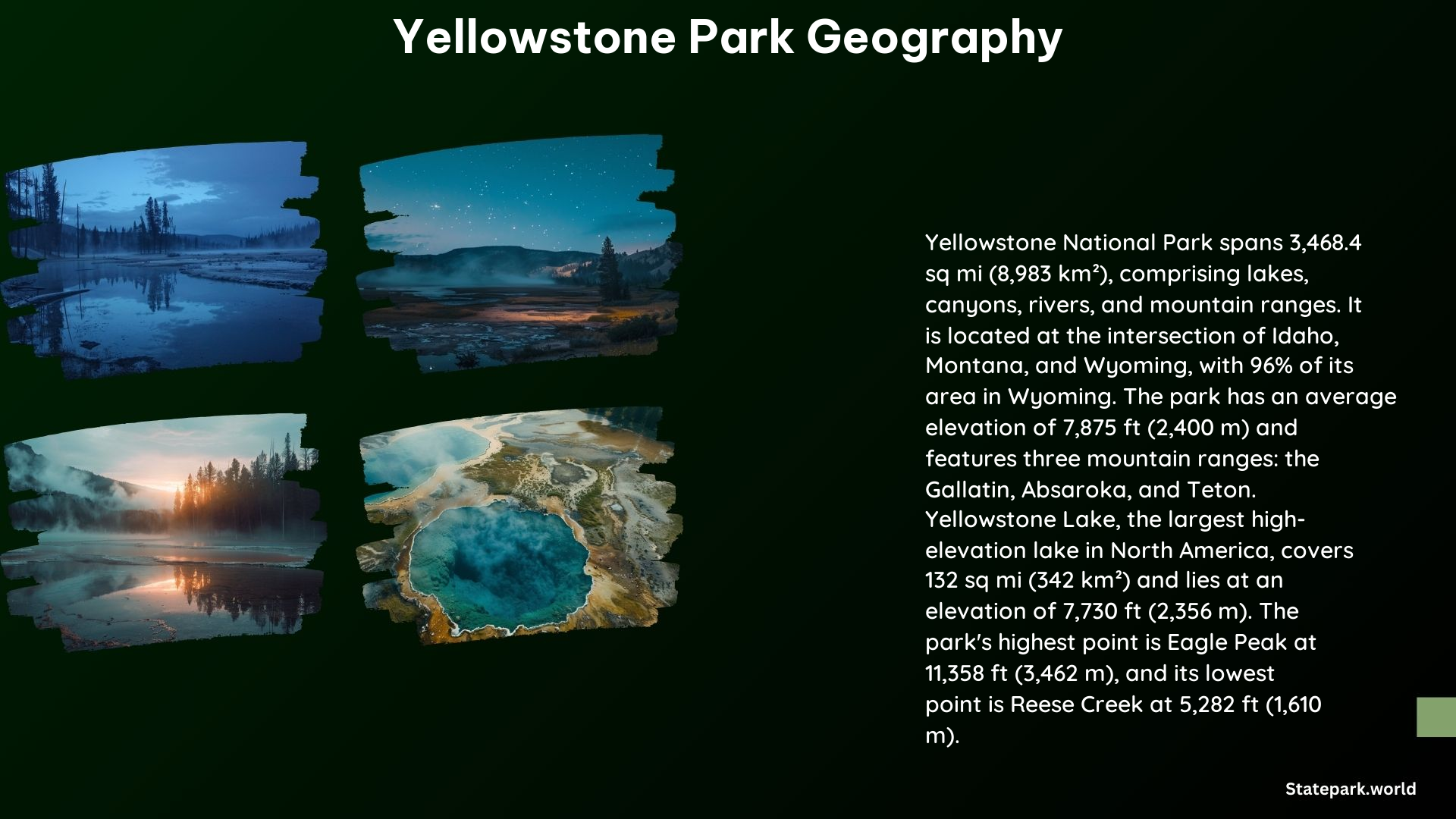Yellowstone National Park is a vast and geologically active region located in the western United States, primarily in Wyoming, with smaller portions in Montana and Idaho. From its towering mountain ranges to its expansive volcanic plateaus, Yellowstone’s geography is truly awe-inspiring.
The Vast Size and Diverse Landscape of Yellowstone
Yellowstone National Park spans an impressive 3,472 square miles (8,991 km²), making it one of the largest national parks in the United States. The park’s vast size encompasses a diverse range of landscapes, including:
-
Mountain Ranges: Yellowstone is home to three distinct mountain ranges – the Gallatin Range in the northwest, the Absaroka Range in the east, and the northern part of the Teton Range along the southwestern boundary. The highest point in the park is Eagle Peak, reaching an impressive 11,358 feet (3,462 meters) in elevation.
-
Volcanic Plateaus: The majority of Yellowstone’s landscape consists of broad volcanic plateaus, with an average elevation of around 7,875 feet (2,400 meters). These plateaus were formed by a series of massive volcanic eruptions over the past two million years.
-
Lakes and Rivers: Yellowstone is home to numerous lakes and rivers, including the iconic Yellowstone Lake. Covering 132 square miles (342 km²), Yellowstone Lake is the largest high-elevation lake in North America, sitting at an elevation of 7,730 feet (2,356 meters). The park is also traversed by several rivers, such as the Yellowstone River, which flows through the park and forms the stunning Grand Canyon of the Yellowstone.
Yellowstone’s Geothermal Wonders

One of the most distinctive features of Yellowstone’s geography is its abundance of geothermal features. The park is home to over 10,000 geysers, hot springs, and other hydrothermal features, including the famous Old Faithful Geyser and the breathtaking Grand Prismatic Spring.
These geothermal features are a result of the park’s location atop a large volcanic caldera, which has erupted several times in the last two million years. This volcanic activity has created the unique and dynamic geology that defines Yellowstone’s landscape.
The Greater Yellowstone Ecosystem
Yellowstone National Park is part of the Greater Yellowstone Ecosystem, the largest remaining nearly intact temperate ecosystem in the world. This vast and diverse ecosystem encompasses not only Yellowstone but also Grand Teton National Park, several national forests, and other protected areas.
The Greater Yellowstone Ecosystem is home to a wide variety of wildlife, including iconic species such as grizzly bears, wolves, bison, and elk. The park’s varied climate, ranging from 10 inches (26 cm) of annual precipitation in the north to 80 inches (205 cm) in the southwest, supports a diverse array of plant and animal life.
Exploring Yellowstone’s Diverse Landscapes
Yellowstone’s geography offers visitors a wealth of opportunities to explore and experience the park’s natural wonders. From hiking through the rugged mountain ranges to marveling at the park’s geothermal features, there is something for everyone to discover in this captivating national park.
Whether you’re a seasoned outdoor enthusiast or a first-time visitor, Yellowstone’s diverse and awe-inspiring geography is sure to leave a lasting impression. So pack your bags, lace up your hiking boots, and get ready to explore the breathtaking landscapes of Yellowstone National Park.
References:
– https://www.nps.gov/yell/learn/nature/geology.htm
– https://education.nationalgeographic.org/resource/yellowstone/
– https://en.wikipedia.org/wiki/Yellowstone_National_Park
– https://www.britannica.com/place/Yellowstone-National-Park/Physical-features
– https://www.yellowstone.org/experience/visitor-information/yellowstone-national-park-facts/
